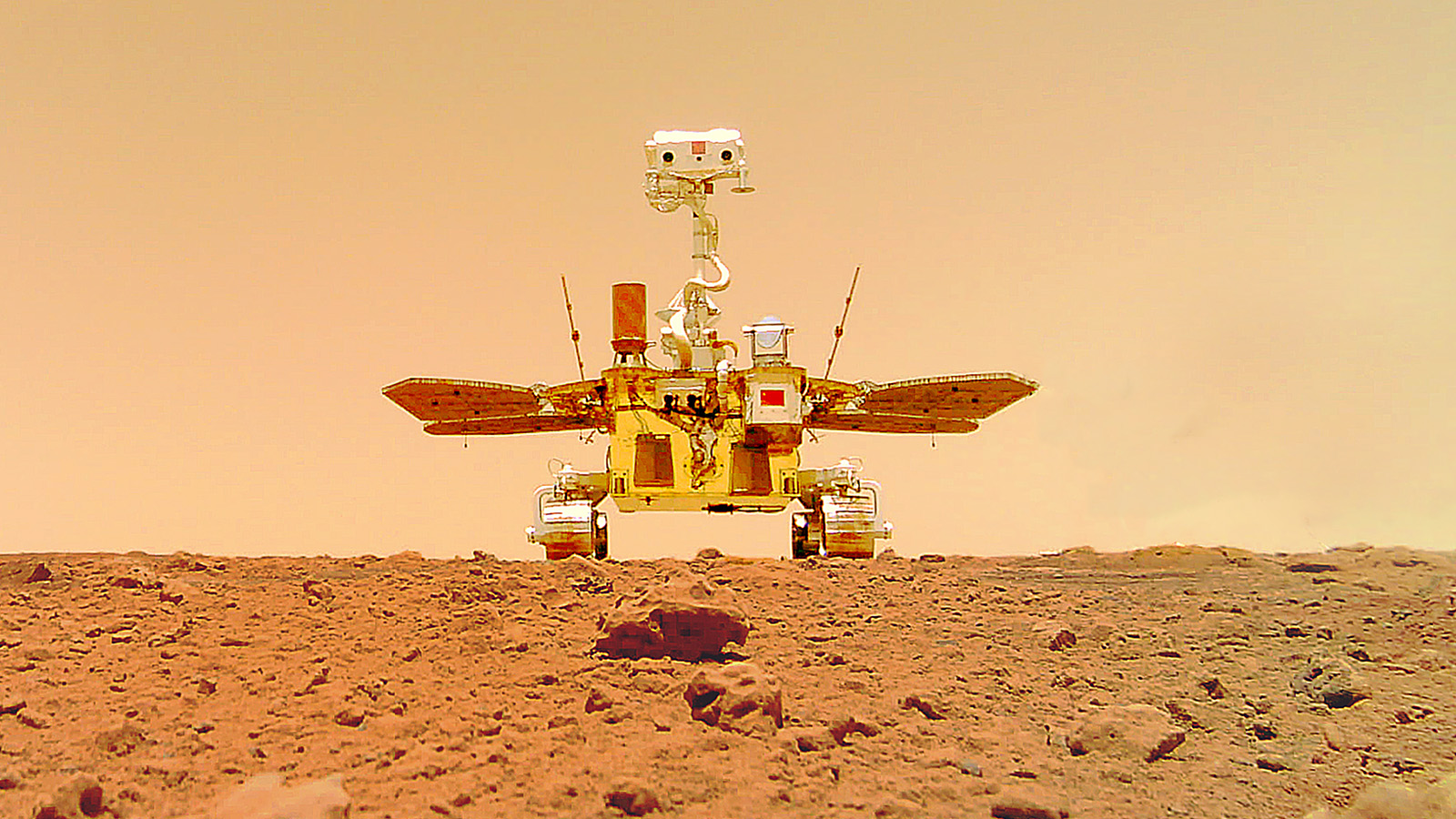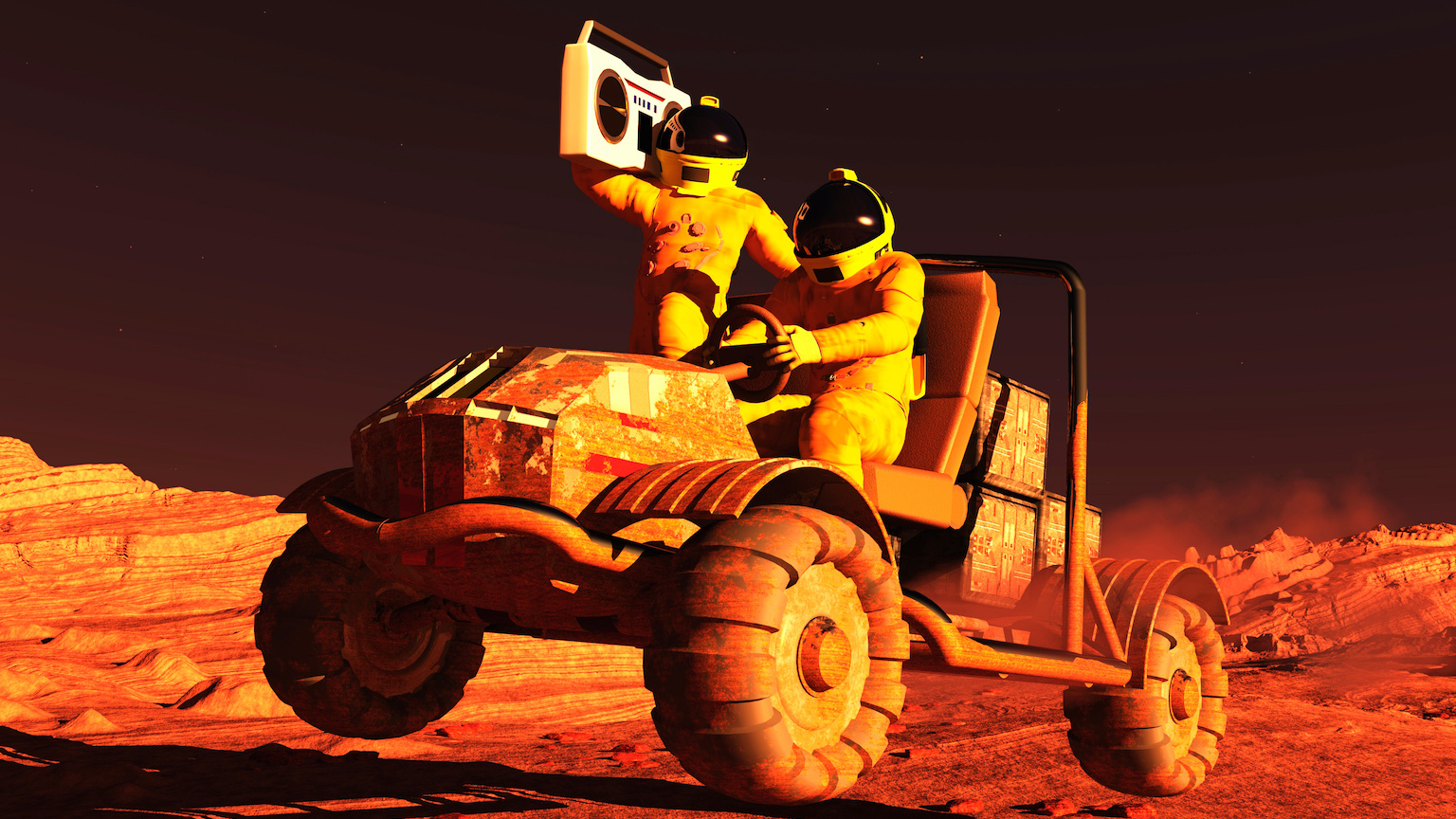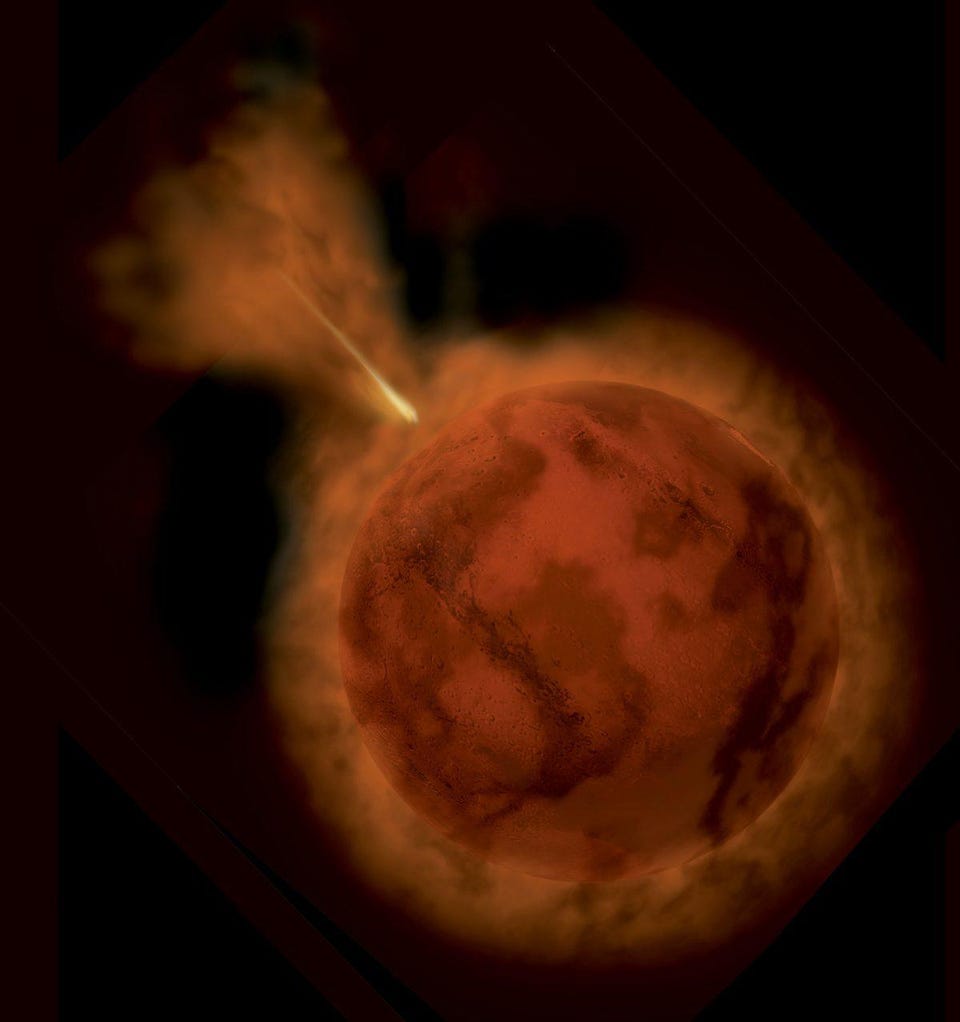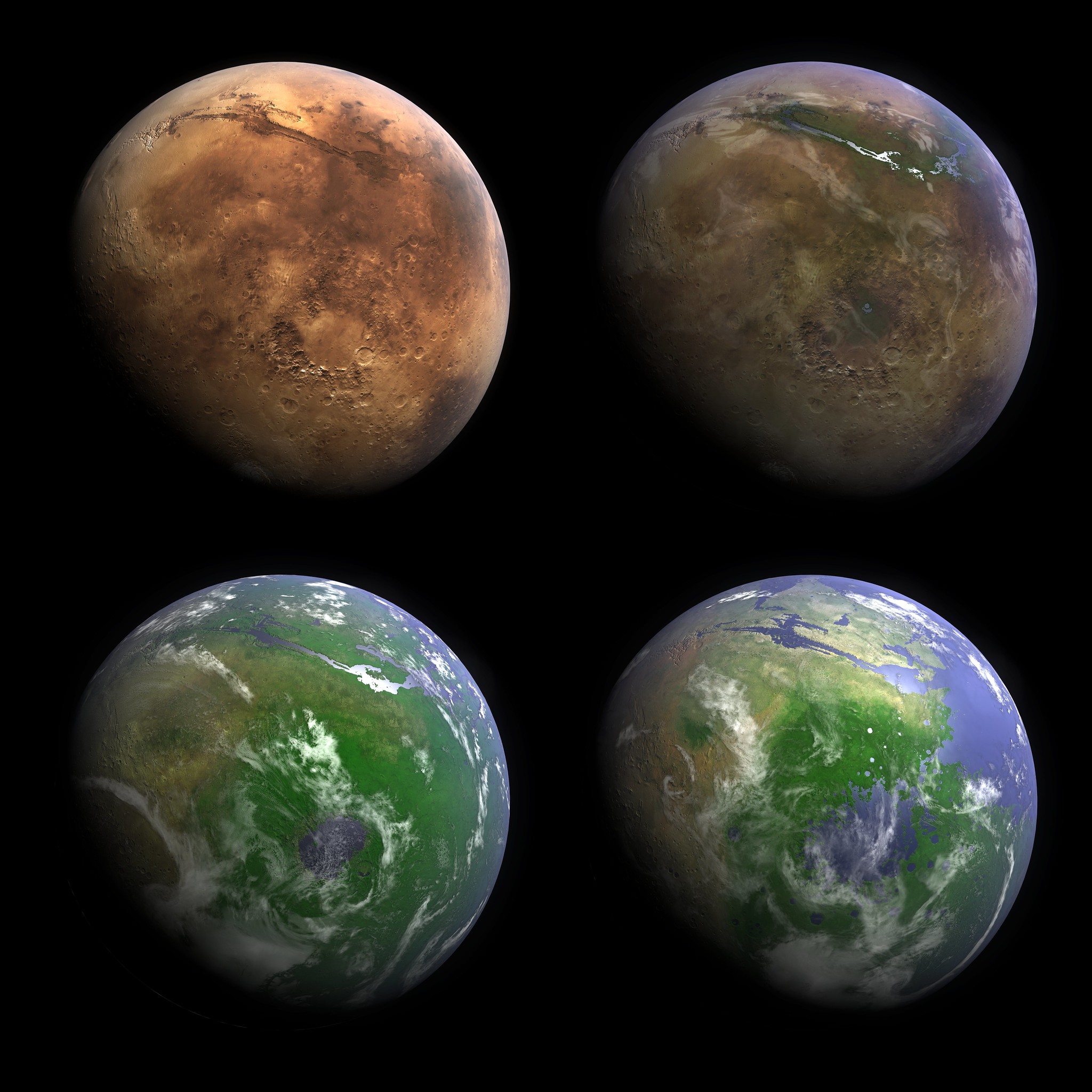To find life on Mars, don’t follow the water — follow the salt

- Microbes can survive inside small bubbles within rocks made of salt.
- In deserts, salts can absorb water from the atmosphere, allowing life to survive — even if just barely.
- Instead of “following the water” on Mars to find life, it might be smarter to “follow the salt.”
Tortoises can live for almost 200 years, clams for more than 500. Some trees have been known to last thousands of years. But how’s this for longevity? A new study published in the journal Geology by a research group from West Virginia University showed convincingly that microorganisms found in a salt rock in Australia have survived for 830 million years.
The results are remarkable on several accounts. It extends the record for how long bacteria can remain viable in fluid inclusions — that is, microscopic bubbles — within rocks by nearly 500 million years. (The previous record holder was from a 250-million-year-old salt rock.) And perhaps more surprising, the recovered microorganisms included not only bacteria, but more complex microorganisms like algae and fungi.
Stayin’ alive
The obvious question is how microorganisms can survive for such a long time. The authors could not provide a clear answer, but bacteria are known to go dormant, forming spores that require little or no energy expenditure over time. Even non-spore forming microbes are known to lower their metabolic rate to near zero, which also allows them to become dormant. Perhaps some of the microorganisms originally trapped in the Australian rock died, providing food for the remaining microbes. Although the exact mechanism is unknown at this time, it seems clear that the fluids inside the salt inclusions serve as a microhabitat for the trapped microbes, which allowed for the exceptional preservation of organic matter over millions of years.
Salts aren’t just good preservatives. They also support active life. The most common way they do that is by lowering the freezing point of water so that it stays liquid in very cold environments, on Earth and possibly elsewhere. Some salt-adapted microbes can live in a saturated sodium chloride solution with a freezing point of -21o C (-6o F). At least one bacterium, Planococcus halocryophilus, is able to metabolize at this low temperature. Perchlorates found in Chile’s Atacama Desert, Antarctica, and even on Mars can suppress the freezing point of water even further, although microorganisms don’t seem to be able to tolerate them as well as solutions made of chloride salts.
In the driest areas of the Atacama, microbes rely on the ability of certain salts such as halite — the same thing as table salt, chemically speaking — to attract water directly from the atmosphere. (This hygroscopic property is why salt gets clumpy if you leave it in humid air for too long.) The effect becomes even more pronounced in hyper-arid deserts. The salt absorbs so much moisture that some of it dissolves and forms a solution, a process called deliquescence. This is how microbes can survive in a place where it may only rain once every decade.
Of Mars and microbes
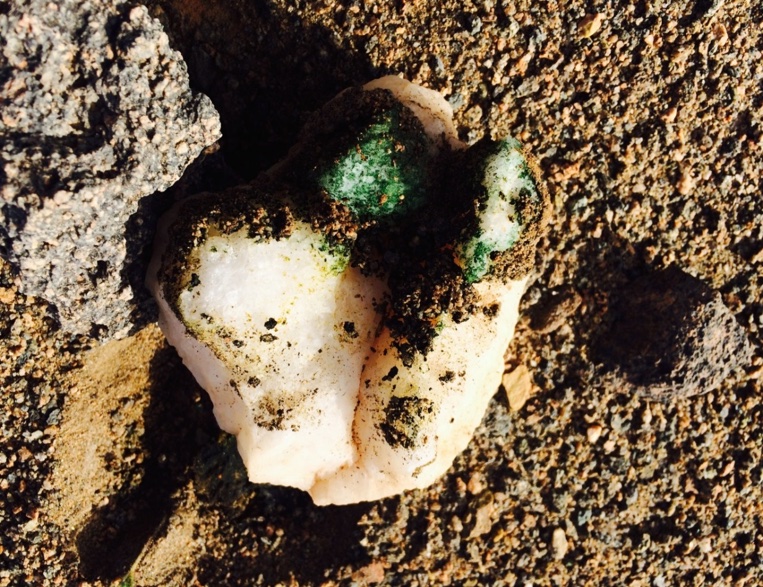
These water-hoarding properties of salt would be extremely valuable for Martian organisms, if they exist. Early Mars was warmer and wetter than it is today, and liquid water existed on its surface as recently as two billion years ago (or perhaps even more recently). Surface life might have gone extinct when the planet dried up, but perhaps its organic remnants can still be found in entombed salt crystals. If we are really lucky, perhaps we can even find preserved, viable microorganisms on Mars today.
There’s a more exciting possibility. If life was able to hang on after the last lakes on Mars evaporated and the planet turned cold and dry, salts may have kept pockets of water above the freezing point in locations like the bottom of the Valles Marineris Canyon, caves known as lava tubes, or just beneath the Martian surface. Microbial holdouts from the planet’s wet period could have adapted to desert conditions with the help of hygroscopic salts like halite, and super-salty environments may have become the last outposts of life. Three years ago, at a NASA-organized workshop to discuss the possibility of Martian life existing today, salt environments were recognized as one of the four potential niches for life on Mars, the others being caves, ice, and the deep subsurface.
On Mars, follow the salt
Don’t get me wrong, it would certainly be very challenging for life to thrive on Mars today. The planet is two to fifty times drier than the driest region of the Atacama desert, where microbial life can just barely hang on. But Mars has seen episodes of increased volcanic activity in its past, which may make the planet temporarily less arid. Once every few million years or so, the Martian axis tips over, the polar ices melt, and the water gets redistributed to the equator. During these events, water availability on Mars would be very similar to deserts on Earth. Life may have evolved to go dormant during dry Martian periods (like today) and become active when liquid water reappears.
If so, we should look for Martian life just below the surface. In the dry core of the Atacama, we find an assortment of microbial life only centimeters underground, including cyanobacteria that need light for photosynthesis. The same may be true on Mars, if we look in the right location. Where would this be?
I suggest searching where no lander or rover has looked before: the Southern Highlands of Mars. We know from remote sensing images that there are plenty of chloride salt deposits near the surface. Rather than following NASA’s old mantra of “follow the water,” we should look for salts, as these are a proven means of obtaining water in very dry deserts. They could point us to one of the most exciting discoveries in history.
